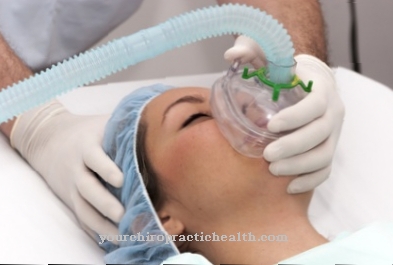Incubators are medical devices that create ideal conditions for various growth processes and, through suitable climatic conditions, enable healthy growth and care for sick newborns or premature babies, for example.
For infants and especially premature births, however, treatment in the incubator is also associated with risks, above all with an increased risk of infections, since the warm, humid environment of the Incubators all germs can spread more easily. In addition to such infant incubators, microbiological laboratories also use incubators for storing organic materials and for growing bacteria or other cultures.
What is an Incubator?

Incubators are medical devices that provide ideal conditions for healthy growth and care for sick newborns or premature babies.
Incubators create controlled conditions in which certain growth processes are possible. In addition to the incubators with constantly high temperature and humidity, the cultivation cabinets in medical laboratories are also known as incubators. These microbiological incubators are used to grow germs or to store blood and human tissue.
In this context, the incubator for microbiology itself is of great importance. In the newborn ward, air-conditioned and mobile incubators serve not only to care for premature babies and seriously ill newborns, but also to transport them and are also referred to as transport incubators in this form. Every type of medical incubator creates controlled and optimizable external conditions by allowing factors such as the temperature within the devices to be adjusted to a specific growth or incubation process.
With the advancement of technology, the incubator has also evolved, so that highly specialized and sophisticated incubators are now available for the individual areas of application. The very first incubator in the form of an incubator was developed in France in 1857. In the USA, Dr. Champion Deming the pioneer of the incubator who nursed the first incubator baby Edith Eleanor McLean in the box in 1888. The technology of that time cannot be compared with the technology of today's incubators and microbiological incubators. For example, Deming's infant incubator was heated with 57 liters of water.
Function, effect & goals
The function of medical incubators is to generate ideal growth conditions and thus to support a growth process. Infant incubators are the most well known incubators. In connection with newborns, for example, transport incubators are often used, which enable the interhospital transfer of a premature or seriously ill baby.
Such transport may be necessary if the baby is to be transferred from the birthplace to a more specialized hospital that is more likely to meet his needs. In this scenario, the transport is usually carried out as part of a baby ambulance. The newborn is in the baby ambulance inside the transport incubator, which is both mobile and enables the baby to be loaded as safely, hygienically and quickly as possible. Like all infant incubators, transport incubators are heated and enriched with oxygen. A resuscitation bag may also be connected to the incubator, which permanently supplies seriously ill newborns with oxygen.
In addition to the conventional transport incubator, intensive care transport incubators are also available, which are used in particular for newborns with endangered vital functions. This special form of the boxes is equipped with intensive medical connections for a suction device or an infusion pump. In addition, monitors for monitoring body functions can be connected to this type of incubator.
Microbiological incubators differ from baby incubators or transport incubators in that, firstly, they do not necessarily have to be mobile and, secondly, they often cool just as well and precisely as they warm. Microbiology incubators are used in particular to store organic samples, but are also used for growing bacteria or incubating other live cultures.
Risks, side effects & dangers
Incubator therapy carries some risks for newborns. Babies are dependent on a relatively constant body temperature, although the incubator treatment cannot guarantee this constant temperature in some cases. Therefore, the infant must be checked regularly for body temperature, which is ideally measured rectally. Hypothermia, i.e. cooling down of the newborn, can occur.
On the other hand, hyperthermia, that is, overheating of the baby, can set in. As a result of overheating, the infant loses a lot of fluid, which can lead to electrolyte disorders. Hyperventilation or tachycardia cannot be ruled out either. As a rule, the correct temperature in modern devices can be set and adjusted using the skin temperature control. Particularly for extremely premature births with a generally high loss of fluid through the skin, for newborns in shock or babies with infections, the measured value for the skin temperature or changes in temperature of the young patient can no longer be understood.
In addition, the oxygen supply in an incubator can be associated with risks for a newborn. In the case of undersupply due to incorrect measurement results, apneas and ultimately brain damage can occur. In premature babies, measurement errors can also cause oxygen overdoses, which may damage the newborn's eyes.
Since oxygen increases the risk of fire, personnel must also ensure that sources of fire are removed in the immediate vicinity of the incubator. In this context, sources of fire could arise, for example, from extremely flammable material that is placed on the incubator. Apart from that, the humid and warm temperature in the baby's incubator is an ideal breeding ground for germs and can therefore sometimes be associated with an increased risk of infection for the baby.





.jpg)





















